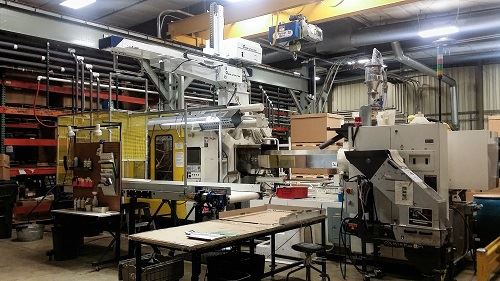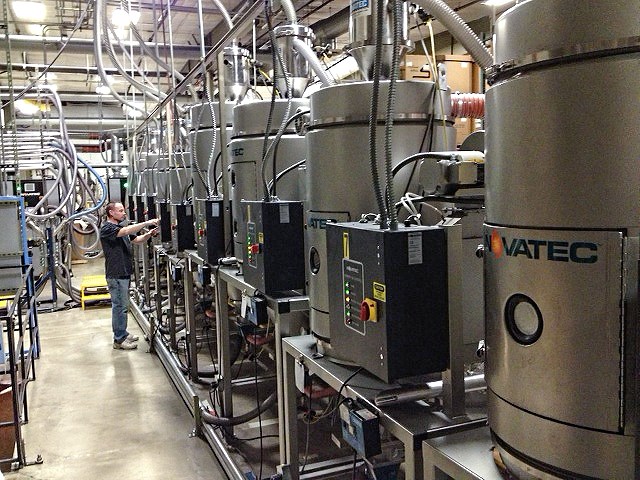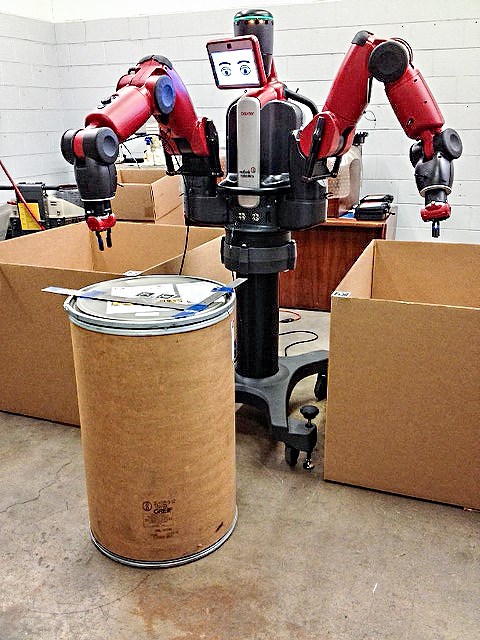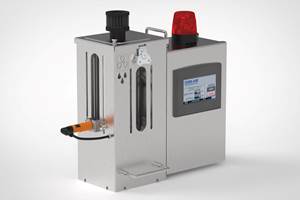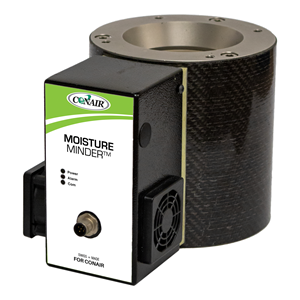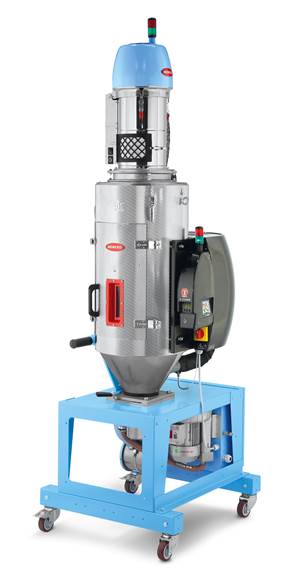Short-Run Specialist Chases Higher Productivity While Staying Lean
How do you automate jobs that run only a few hours? That’s only one of the questions challenging a fast-growing, short-run molder.
Donnelly Custom Manufacturing describes itself as “a sprinter, not a marathoner,” a phrase describing its focus on short-run custom injection molding, where the median run time is shorter than a work shift. But these days, the race is not just against short delivery times, but against the need to keep up with fast-growing business volume without losing the efficiencies that define the company’s lean manufacturing philosophy.
“We achieved new sales records in 2012, 2013, and 2014,” says Ron Kirscht, president. “Last year, we hit $32 million and exceeded 200,000 hr of molding activity for the first time.” That’s up from 178,000 hr in 2012, which was slightly ahead of the firm’s pre-recession peak.
While any molder would welcome more business, Donnelly’s system for handling more than 40 mold changes a day—more than one per machine—requires keeping overall capacity utilization to no more than 70% for an extended period. A resurgence in business since the recession has made that hard to achieve and has kept the company scrambling. “In the last two years, we were crunched,” says Jerry Bienias, v.p. of operations. “We couldn’t afford to run a couple of orders for a customer at one time. We could only run what we needed today. That meant we had to go back to the same mold three days later. It was inefficient, and we had to solve that problem.”
Founded in 1984, Donnelly is a privately owned molder with 230 employees and 35 presses from 20 to 720 tons at its plant in Alexandria, Minn. (see our Sept. ’12 profile of the company). It runs some 500 resins and more than 2000 active molds. More than 150 of those molds were transferred from a bankrupt molder in 2009, and those customers ramped up their orders in 2013.
As Kirscht explains, Donnelly divides its machines for production management purposes into four tonnage categories” 20 to 80 tons, 110 to 140 tons, 150 to 240 tons, and 300 to 720 tons. That largest category experienced the most severe capacity crunch, up from a comfortable 66% in 2012 to 76% in 2013 and as high as 85% last year. The increased demand was for housings for industrial air and fluid pumps and filtration equipment. Donnelly responded by adding two more 720-ton Toshiba presses to its one existing machine of that size. It added another 10-ton bridge crane for mold changes. And it rented a 20,000-ft2 building across the street for warehousing molded products, so it can devote former storage space in its plant to manufacturing.
Another response was to install a second central materials drying and conveying system. One such system, from Novatec Inc., Baltimore, was in place for small to medium-size presses. Last year, a second Novatec system was installed for the large presses to replace a bank of portable dryers. “It’s a great fit with short-run manufacturing,” says Bienias, “with less equipment overall, fewer hoppers and dryers at the presses, and easier access to one central system.” The $200,000 system is based on a Novatec wheel-type desiccant dryer. Over the last four years, Donnelly has been converting from twin-tower to wheel-type dryers. They have faster changeover—2 hr vs. 4 hr for the others—and use less energy, says Bienias.
Speaking of energy, Donnelly has been converting gradually from hydraulic to all-electric machines (mostly Toshiba), which save an estimated 20% in operating cost and provide greater accuracy and repeatability, thereby reducing scrap. Over 85% of Donnelly’s presses are now all-electric.
Another push for higher productivity involves robotics. “In 2004, we really started working on more robotics, not just sprue pickers,” says Kirscht. They provide a more consistent cycle and free up people for more value-added tasks at the press, like ultrasonic and hot-plate welding, decorating, and machining. All machines above 180 tons have Star robots, up from one or two in 2007.
The key challenge was how to automate jobs that run only a few hours. “We developed our own ‘universal’ end-of-arm tooling with adjustable vacuum cups,” Bienias explains. He also notes that servo robots facilitate quick changes by calling up digital programs stored in memory.
Donnelly is also one of the first few molders to use the new “collaborative” robots that can work safely alongside humans. Donnelly purchased two of the humanoid-style Baxter robots from Rethink Robotics, Boston. They have two arms and an expressive “face” on an LCD screen. “Unemployment is less than 3% in our area, and it’s hard to find people,” Kirscht says. He sees the Baxter as useful for mundane pick-and-place tasks beside presses or in the secondary-operations area—putting parts on a conveyor or layer packing them in boxes. “Packing boxes takes the equivalent of half a operator’s time. The Baxter can do it and keep count without need for weighing the boxes.”
Donnelly is also keeping pace with higher production by using laser scanning for initial part inspections. “It’s 50% faster than a CMM touch probe for dimensional inspection and allows QC technicians to spend more time solving problems,” Kirscht notes.
He adds that Donnelly is starting to explore the possibilities of 3D printing or additive manufacturing. The firm is considering a Stratasys FDM unit for building jigs and fixtures. “We need a lot of them to check part acceptability or for value-adding secondary operations.”
Related Content
How to Effectively Reduce Costs with Smart Auxiliaries Technology
As drying, blending and conveying technologies grow more sophisticated, they offer processors great opportunities to reduce cost through better energy efficiency, smaller equipment footprints, reduced scrap and quicker changeovers. Increased throughput and better utilization of primary processing equipment and manpower are the results.
Read MoreMoisture Monitor Provides Instant Readings to Confirm Drying Efficacy
Real-time monitor measures material moisture continually and set points can be configured so that an alert is issued when the specified moisture level drifts outside prescribed limits.
Read MoreCompact, Mobile Dryer Has Unique Conveying Capabilities
Mobile dryer includes closed-loop conveying to minimize the use of ambient air for resin movement.
Read MoreRead Next
Processor Turns to AI to Help Keep Machines Humming
At captive processor McConkey, a new generation of artificial intelligence models, highlighted by ChatGPT, is helping it wade through the shortage of skilled labor and keep its production lines churning out good parts.
Read MoreHow Polymer Melts in Single-Screw Extruders
Understanding how polymer melts in a single-screw extruder could help you optimize your screw design to eliminate defect-causing solid polymer fragments.
Read MoreWhy (and What) You Need to Dry
Other than polyolefins, almost every other polymer exhibits some level of polarity and therefore can absorb a certain amount of moisture from the atmosphere. Here’s a look at some of these materials, and what needs to be done to dry them.
Read More

